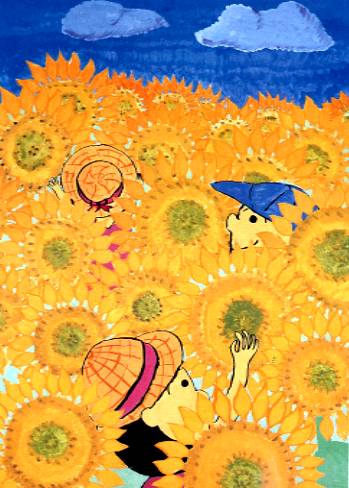Quality of the Environment in Japan 1998
To Realize Society for the 21st Century Keeping Sound Material Cycle and Harmonious Coexistence with Nature
Environment Agency
contents

- Prologue :
- Our Planet of the Next Century :From the Viewpoint of the Kyoto Conference
- Achievements of the Kyoto Conference on climate change and global warming, and the measures to be taken
- Turning away from the paradigm of mass-production, mass-consumption and mass-disposal
- Chapter I :
- Towards a Socio-economic System with Environmentally Sound Material Cycles
- Chapter II :
- Development of Local Communities with "Sound Material Cycle" and "Coexistence of Nature and Human Being," from the Viewpoint of Japan's Land Use
- Chapter III :
- Transformation of Current Lifestyles
- Chapter IV :
- State of the Environment
- Final Remarks
To Readers
This site is based on the summary of the Japanese government's "White Paper on the Environment" which was drawn up for the fiscal year 1998 and made public after its adoption at the June 5th Cabinet meeting. The Environment Agency has re-edited the paper, adding new information and photographs, in order to make it easier to understand and more accessible to the general public. In December last year, the third session of the Conference of Parties (COP3) of the United Nations Framework Convention on Climate Change was held in Kyoto, and the Kyoto Protocol was adopted as a step forward in the international efforts to arrest global warming in the 21st century. However, it is difficult to deal with the various environmental issues that confront us, including arresting global warming, by treating each environmental problem on an individual basis. It is necessary to question the basis of the systems of our modern economy and society, and to make our society sustainable given the limited nature of our global environment.
In the Basic Environment Plan based on the Basic Environment Law that was established five years ago, the "realisation of an Economic and Social system based on circularity with reduced environmental load" is emphasised. Domestically, there is a beginning of a gradual move towards changing our lifestyles which are the basis of our economy and society.
From this perspective, this year's White Paper looks at ways society may go in the 2lst century and embraces the theme "to Realize Society for the 21st Century Keeping Sound Material Cycle and Harmonious Coexistence with Nature." Citing actual examples such as the movement towards establishing a circular system in industry, with particular regard to waste recycling issues, this White Paper clarifies current problems and tries to concretely describe directions that could be followed to change our current economy and society.
We hope that this booklet will help each reader to become more aware of environmental issues and will act as a reference for concrete action.
* The picture on the top of this page is by Tetsuko Hagiwara, a third grade student (in 1997) at the Abiko City Kujike Junior High School in Chiba Prefecture. The picture won the Environment Agency's Director's award in the "Third Nationwide Environmental Poster Competition of the Ganbare Junior Eco-Club " organized by the Japan Environment Association and Mainichi Shimbun (newspaper). Miss Hagiwara says, "I did my best to draw this picture, trying to create a fun atmosphere, playing among beautiful sun flowers, imagining my elementary school days with a lot of fun memories surrounded by a rich natural environment. "